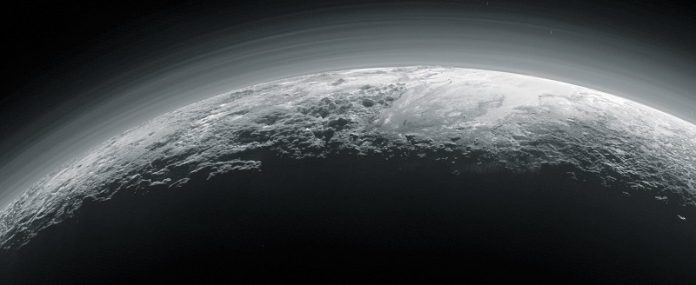
Pluto may be far from the Sun, but it’s turning out to be one of the most fascinating and complex worlds in our solar system.
Thanks to the powerful vision of NASA’s James Webb Space Telescope (JWST), scientists have just confirmed something truly unusual about Pluto’s atmosphere—it’s full of haze particles that help cool the dwarf planet in a way we’ve never seen before.
The discovery supports an idea first proposed in 2017 by Professor Xi Zhang of UC Santa Cruz.
Back then, after NASA’s New Horizons spacecraft flew past Pluto in 2015, Zhang published a bold theory: that Pluto’s thin atmosphere is dominated by haze, and that these particles play a key role in regulating the planet’s temperature.
His idea was met with skepticism, partly because haze usually warms a planet.
But Zhang believed Pluto was different. He predicted that if the haze was really cooling the atmosphere, it should give off a strong mid-infrared signal—something we couldn’t see clearly until a more advanced telescope became available.
That prediction has now been confirmed. On June 2, a new paper published in Nature Astronomy reported that JWST had captured the exact type of infrared radiation Zhang expected.
Using JWST’s MIRI instrument, scientists gathered detailed thermal data from both Pluto and its largest moon, Charon.
These observations included light curves and spectra, allowing researchers to separate and study the two worlds more precisely than ever before.
The data not only confirmed that Pluto’s haze is acting like a cooling blanket, but it also showed how the temperature, surface ice, and atmosphere vary across different parts of the planet.
It even revealed something eerie: Pluto is leaking methane gas into space, and some of that gas drifts across space and ends up on Charon, creating dark, reddish patches on its poles.
This strange transfer of material between two celestial bodies is something scientists haven’t seen anywhere else in the solar system.
Charon, unlike Pluto, has no atmosphere and a more uniform surface made mostly of water ice.
But the new data helped confirm earlier predictions by Zhang’s former Ph.D. student Linfeng Wan, who had modeled Charon’s light patterns based on the way it rotates and reflects heat.
The agreement between prediction and observation adds even more confidence in how haze affects these distant worlds.
Zhang says Pluto is helping expand our understanding of hazy atmospheres, especially in extreme environments.
That’s important because other places—like Saturn’s moon Titan and Neptune’s moon Triton—have similar types of atmospheres. Studying them could tell us more about how haze behaves across the solar system.
Even more intriguing, Zhang points out that Earth once had an atmosphere a lot like Pluto’s, long before oxygen became common.
By studying Pluto’s haze, we may gain insights into the early conditions that helped life begin on our own planet.
For now, Pluto remains a frozen, distant enigma—but one that’s teaching us a lot about the universe, and maybe even about ourselves.
Source: UC Santa Cruz.



